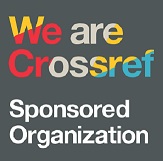PERANAN REPRESENTASI BERBANTUAN SOFTWARE MAPLE PADA PEMBELAJARAN MATA KULIAH KALKULUS
Abstract
Abstract. Computers are essential tools for teaching, learning, and doing mathematics. Computers can visualize or represent mathematical ideas, organize and analyze data, and calculate effectively and accurately. Computers can help students conduct investigations through representations in various fields of mathematics such as geometry, calculus, statistics, algebra, measurements, and numbers. This paper discusses the role of Maple assisted representation in calculus learning. Representation is very supportive in increasing students' understanding of mathematical relations and concepts. There are three main functions of representation, namely complementing, constraining, and constructing. Complementing function is to complete the process and complete the information. The constraining function is to help students experience difficulties in a representation. The constructing function is to support constructing a deeper understanding of a concept. Students can get a deeper understanding if difficulties with only one representation. Maple software is a facility that is very supportive in making representations in learning mathematics as in calculus learning. By using Maple we can do numerical and symbolic calculations and perform graphical representations well. Maple can also effectively determine limits, derivatives, integrals, and a series of other functions and capabilities. With this Maple software capability, we can use it to improve students' understanding of calculus courses.
Keywords: Representation, Computers, Maple, Calculus
Full Text:
PDFReferences
Ainsworth, S., Van Labeke, N. (2004). Multiple forms of dynamic representation. Learning and Instruction, 14(3)
Beckmann, C. E. (1988). Effect of computer graphics use on student understanding of calculus concepts. (Doctoral dissertation, Western Michigan University, 1988). Dissertation Abstracts International, 50, 1974B.
Gagatsis, A, Elia, I & Andreou, S. (2003). “Representations and Mathematics Learning: Functions and Number Line”, Euclidean γ, 59, 5 – 34
Goldin, G. A.(2002). Representation in Mathematical Learning and Problem Solving. In. L.D. English (Ed). International Research in Mathematics Education IRME, 223. New Jessey: Lawrence Erlbaum Associates.
Haciomeroglu, E. S. (2007). Calculus students’ Understanding of Derivative Graphs: Problem of Representations in Calculus, Dissertation: The Florida State University of Education.
Hwang. et.al (2007). Multiple representation Skills and Creativity Effects on Mathematical ProblemSolving using a Multimedia Whiteboard System. Journal Educational Technology & Society. 10(2). 191-212.
Kapput, J. J., Goldin, G.A. (2004). A joint Perspectiveon the Idea of Representationin Learning and Doing Mathematics. [Online]. Tersedia: http://www. simlac.usmassad. edu.
National Council of Teacher Mathematics. (2000). Principles and Standards for Schools Mathematics. USA: Reston. V.A.
Ostebee, A. & Zorn, P. (1990). St. Olaf College: Viewing calculus from graphical and numerical perspectives. In T. W. Tucker (Ed.), Priming the calculus pump: Innovations and resources. pp. 199-222. Washington, DC: The Mathematical Association of America.
Pape, S. J., Tchoshanov, M. A. (2001). The Role of Representation(s) in Developing Mathematical Understanding, Theory into Practice, 40(2), 118 – 127.
DOI: https://doi.org/10.30743/mes.v4i2.1288
Refbacks
- There are currently no refbacks.

.png)

